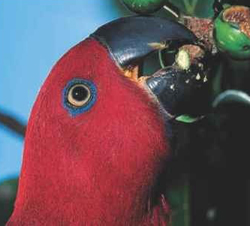 One of the greatest challenges facing parrot caregivers today is that of deciding upon and then committing to a healthy diet for our birds. It seems that every "authority" has a different opinion and no one can agree. Everyone, from behavior consultants to veterinarians, seems to have a different idea about what is correct.
One of the greatest challenges facing parrot caregivers today is that of deciding upon and then committing to a healthy diet for our birds. It seems that every "authority" has a different opinion and no one can agree. Everyone, from behavior consultants to veterinarians, seems to have a different idea about what is correct.
Most veterinarians agree that it is best to feed a 100% formulated (pelleted) diet with perhaps a small amount of added vegetables and fruits. They have good reasons for their convictions. First, the best of these diets will provide a parrot with excellent health. As a licensed veterinary technician, I have seen many happy parrots (who eat a 100% pelleted diet) in excellent plumage sail through their annual exams and lab work. Secondly however, without a good, solid knowledge of both the basics of nutrition and the pitfalls inherent in feeding parrots, it is almost impossible to devise a balanced diet and then get the parrot to eat it. Veterinarians know that most owners will fail at this, unless they provide knowledgeable, on-going guidance.
Nevertheless, I don't see a lot of parrot owners sticking to a 100% pelleted diet for their birds, despite the good reasons for doing so. First, it goes against our grain to feed such a boring diet to these vibrant, dynamic creatures, whose not-so-very-distant ancestors were picking and choosing for themselves from the native wild resources.
Beyond that, however, converting a parrot to a 100% pelleted diet can try the intestinal fortitude of even the least empathic of parrot owners. It can be painfully difficult to convert a parrot to eating a pelleted diet, if he has been enjoying higher fat foods, because it usually requires that we create enough hunger that they are forced to try this new diet.
It is still the norm that young parrots sent home from pet stores and breeders are eating seed mixes as dietary staples. And, the majority of older parrots relinquished to rescue and adoption organizations are usually on seed diets as well. In my experience, unless a method is used that creates hunger in the parrot, it is extremely difficult to transition a parrot from eating a seed mix to a pelleted diet, if these are the only two choices offered.
Usually, people just mix the two together, the parrot keeps happily eating the seed, and the owner is able to feel somewhat content in the fact that at least he has offered the pellets. Fundamentally, however, this is a little like offering a two-year-old child a choice between potato chips and broccoli. You can see the problem.
So, we caregivers are part of the problem. Quite understandably, we want to offer a diet to our parrot that includes a variety of interesting ingredients. We also are social eaters – it's fun to share our meals with our parrots. Further, as humans, we have a tendency to structure our own meals around our appetites.
And, here is the crux of the problem, when it comes to the way we feed our own parrots: we seek to discover our parrots' own appetites to see what they like best. This practice leads to one of the greatest pitfalls we experience as parrot caregivers.
As humans, our own appetites have evolved as a result of childhood experiences, parental teachings, emotions, ethical values, and a host of other social criteria that we bring to bear upon our food choices. Parrots, on the other hand, developed their appetites in the wild. As we all know, most of the medium to large parrots we call family members are only a few generations out of the wild. They still have all the same instincts as their wild counterparts.
I have watched parrots make food choices for over 30 years now, and it is true that they show a preference for foods that are high in carbohydrates and fats. To my knowledge, there are no scientific studies that would support this hypothesis. However, I believe strongly that they are instinctively programmed to load up on these foods when they find them.
Both carbohydrates and fats are categories of nutrients that are used for energy production. In the wild, they are usually in relatively short supply. And, wild parrots have many ways in which they expend energy. So, it makes sense that parrots in the wild would seek out these foods, especially during times of the year when energy expenditure is at its greatest, such as during breeding season.
The problem is obvious, then. They bring these same instincts with them into captivity, where unfortunately, these categories of nutrients exist in our own diets in abundant supply, but where energy expenditure for parrots is greatly reduced.
In my experience, in any parrot/human relationship, either the parrot is teaching the human, or the human is teaching the parrot. Parrots in captivity around the world are doing an exceptionally great job of teaching humans to feed them carbohydrates and fats as dietary staples.
When, in the process of doing a consultation, I ask an owner for a list of the parrot's favorite foods, I often get a list that reads like the Super Bowl Family Buffet Table: chicken wings, Fruit Loops cereal, granola, dried fruit, nuts, pasta, peanut better crackers, peanut butter pretzels, yogurt dips, mashed potatoes, white rice, dried Chinese noodles, chips, and crackers. These are the snack foods that have been added onto the dietary staple of seed mix.
As mentioned earlier, often in an attempt to improve the diet, the caregiver has mixed pellets in with the seed mix. However, when asked if the parrot eats the pellets, the answer is usually, "No." These same well-meaning owners do also offer fresh fruit daily as well. Fresh fruit does contain valuable nutrients (fiber, pectin and enzymes), but fruit is still a carbohydrate.
A diet such as this will create for you, as the parrot caregiver, two main problems. First, it causes malnutrition in your beloved companion. A diet such as this, with seed and pellets mixed in and complimented by table food and fruit, will cause deficiencies in vitamin A, protein and calcium. It is also so high in fat that it will put the parrot at risk for obesity and fatty liver disease. Eating such a diet will inevitably lead to disease.
Of greater immediate inconvenience, however, is that it will cause an increase in the production of reproductive hormones, resulting is what is commonly referred to as "hormonal behavior." This behavior increases at this time of year and can lead us to distraction. Examples: parrots climb down from their cages and chew up the baseboards, linoleum, or even more inconvenient – those satellite television cables tacked along the baseboards. They want to bury themselves in the couch cushions, which is very cute, until you realize that you now need to somehow patch that hole with duct tape in a manner that won't be immediately evident to visitors. They become more territorial, suddenly attaching themselves to that visitor's neck in a surprisingly swift and acrobatic maneuver. And, they are LOUDER.
Carbohydrates and fats are categories of nutrients used for energy. Nesting takes up large amounts of energy. When a parrot eats a diet high in these nutrients, he's got the biological green light for locating that nest and luring someone inside, which results in no end of strange behavior, since our homes aren't exactly set up for this enterprise. Nor do we want them to be.
The goal: calm parrots who go through this period of the year in a sane fashion, happy to chew up their own toys and who maintain reasonable noise levels. The answer: feed them appropriately. This requires, however, that you decide that you will be teaching the parrot, rather than the other way around.
This article is not meant to be a complete overview of psittacine nutrition, complete with "how-tos." This information has already been produced and is available in several locations. However, I can give you some general guidelines to get you started so that you can begin to change the diet in a positive way, and in a manner that does not cause hunger for the parrot.
First, if you are feeding a seed mix, measure this so that you know how much you are offering each day. Do not fill the cup up and then replenish it when it is empty. Instead, offer fresh seed mix each day in a bowl by itself. Do not mix seed with pellets. The goal, at the end of your conversion process, will be that seeds are offered as treats only, or to create a foraging experience. However, we don't want to take away an important dietary staple at this point. So, for now, offer a measured amount that the parrot eats in one day. Feed that amount for two to three weeks, and then begin to reduce this gradually by about 10% each week. For those of you who don't think in terms of percentages, do this: take a teaspoon and measure out 10 teaspoons of seed into the dish. Feed that for two to three weeks. Then, for the next two weeks, feed only 9 teaspoons of seed each day. After two more weeks, decrease that to 8 teaspoons of seed a week. Continue with this process, as you introduce other foods. Along the way, your parrot will begin to eat the healthier foods you offer, so will not go hungry as the seed is decreased.
There are many excellent pellet formulations on the market but my preference is for undyed, organic formulations. I personally feed my own parrots the Harrison's High Potency pellets. As you have already discovered, parrots are usually suspicious of new things, so if you decide to switch your pellets don't make the change to these new pellets immediately. Instead, I want you to mix the new pellets into the old pellets. In the beginning, strive for about ¼ old pellets to ¾ new pellets. After a couple of weeks, make this mixture 50:50. Once your parrot begins to eat the new pellet brand, then you can gradually phase out the older one. Make sure that you offer these pellets in a separate dish. Do not mix them with anything else. And, as with the seed mix, replace these with fresh pellets each day.
Once you have converted your bird to pellets, you can think about offering more variety. The DVD, Feeding Our Parrots Well, which Kris Porter and I produced, makes this very easy. However, there are other ways to accomplish this, as well. The Lafeber Nutriberries and Avicakes are also formulated foods which many parrots enjoy. These can be served as an adjunct to the pelleted diet.
Parrots benefit from receiving live, raw fresh foods. Live, raw vegetables and fruits contain categories of nutrients that processed foods do not, such as enzymes, phytonutrients, and essential fatty acids. I think a reasonable goal is to provide two to three fruits and 5 to 7 vegetables each day. These can be cut up and placed into a third food bowl, or can be placed onto a food skewer. Do not be discouraged if your parrot doesn't touch these offerings. Just keep doing the right thing from long enough and he will eventually try them and learn to enjoy them.
There are also some soak and cooked bird diets which can be prepared and served for the evening meal. My advice would just be to stay away from any that contain pasta made from white flour. As our enthusiasm has grown for feeding our parrots a variety of healthful foods, different recipe books have become available as well. One of my favorites is Nourish to Flourish by Ann Brooks (www.phoenixlanding.org).
So, what about those treats you are so fond of feeding? My best advice – keep them out of the diet, except for when you want to use them to reinforce (reward) desirable behavior. For example, if you have a parrot who doesn't always go into his cage willingly, that's the time to reward him with one of those beloved peanut butter crackers (perhaps a half of one). If you have a parrot who doesn't always step up when you ask him to, then offer him a sunflower seed for doing so (once you've managed to get that seed mix out of the diet.)
I realize that it's hard to change your parrot's diet. I also realize you're afraid that he'll be angry if he doesn't get that beloved dry mix in the morning, full of all those Chinese noodles, Fruit Loops, dried fruit, nuts and seeds. Just remember, while adjustments aren't always comfortable, he will adjust and he'll be around a lot longer to love you well. Your job is to create a landscape of healthy food choices, stick to that and teach him to enjoy them. You can do it!
*************
Pamela Clark, CVT is a parrot behavior consultant. She provides assistance to owners of companion parrots both in the home and by telephone. Her particular areas of interest include the resolution of all behavior problems, but especially that of feather destructive behavior, excellent nutrition for each species and positive reinforcement training. Pamela frequently works with clients to re-pattern their parrots to a healthier diet. She is a well-known speaker and her articles have appeared in the Grey Play Round Table, the Companion Parrot Quarterly, Bird Talk Magazine, Birds USA, the Holistic Bird Newsletter, Parrots Magazine and Good Bird Magazine. She can be contacted for private consultations at (503) 606-0235 or at
Pamela Clark and Kris Porter have also just released a great DVD "Feeding Our Parrots Well" which can be purchased directly from Kris Porter's Parrot Enrichment website at www.parrotenrichment.com
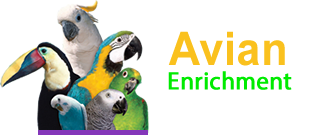














































































































































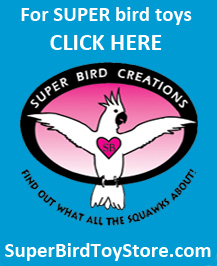

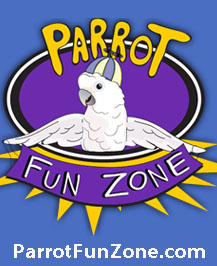
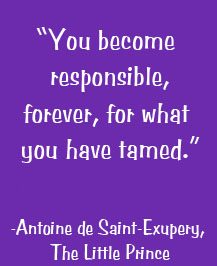
Comments powered by CComment